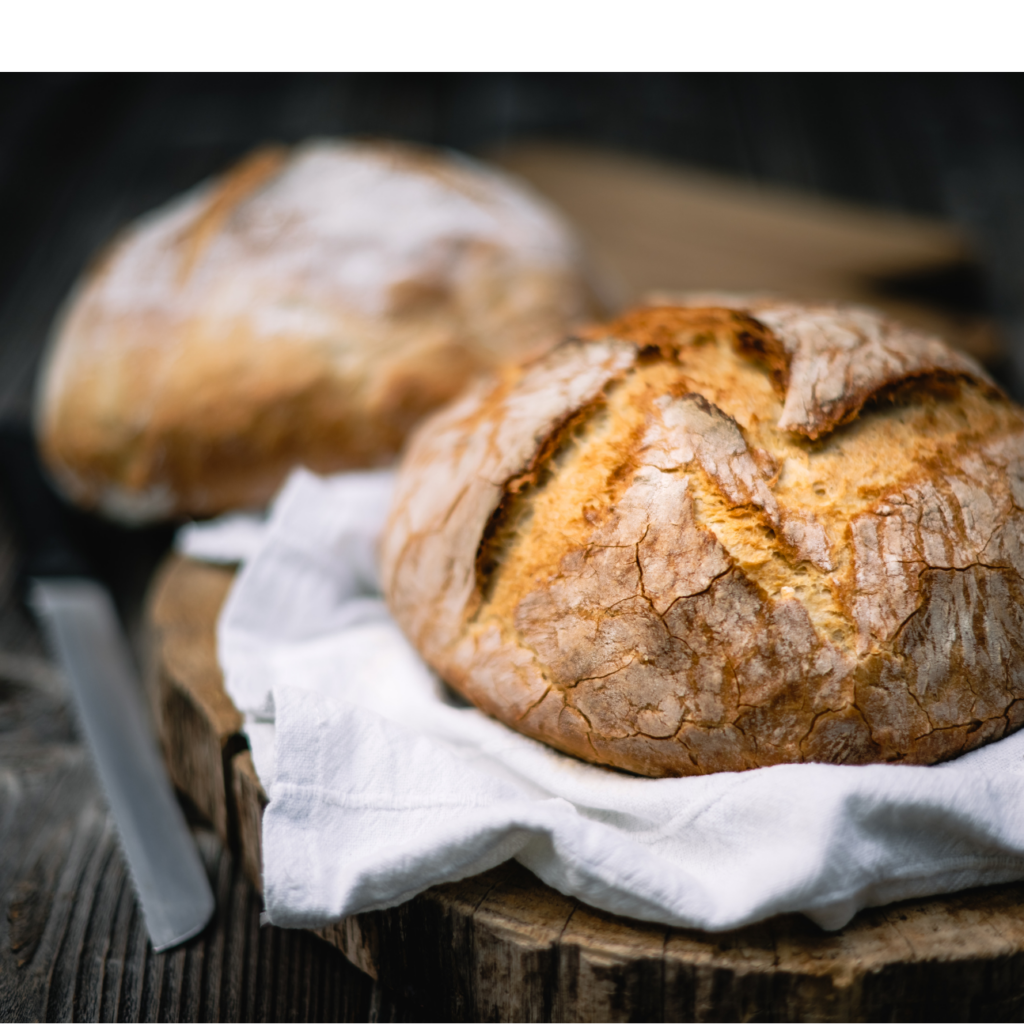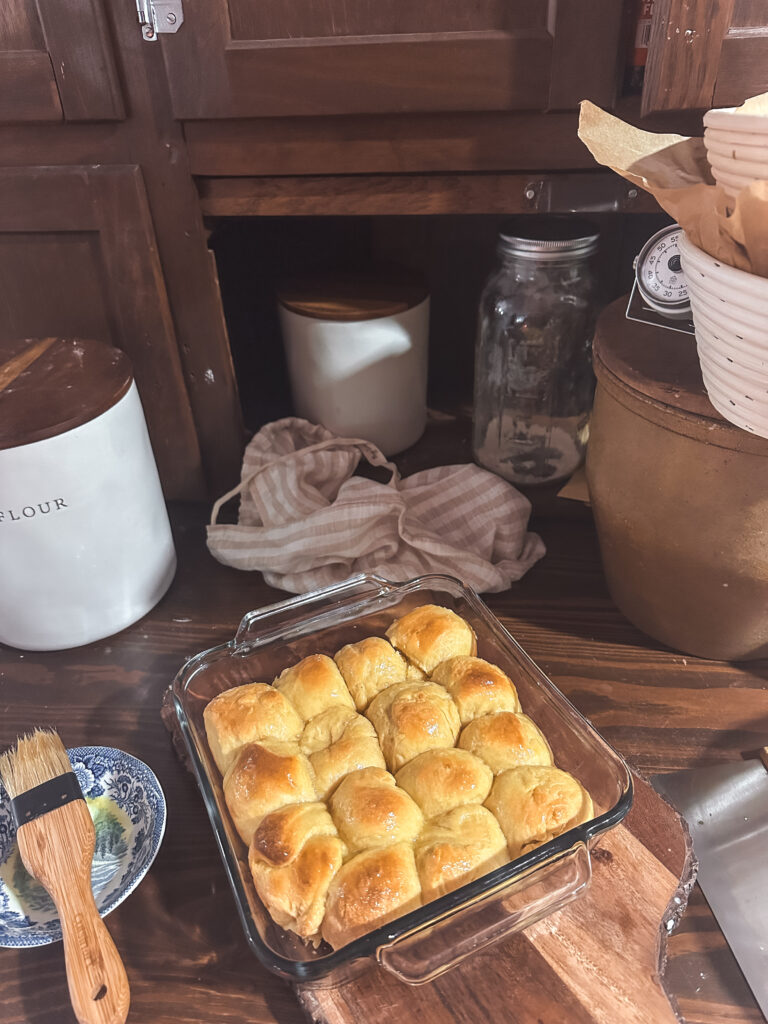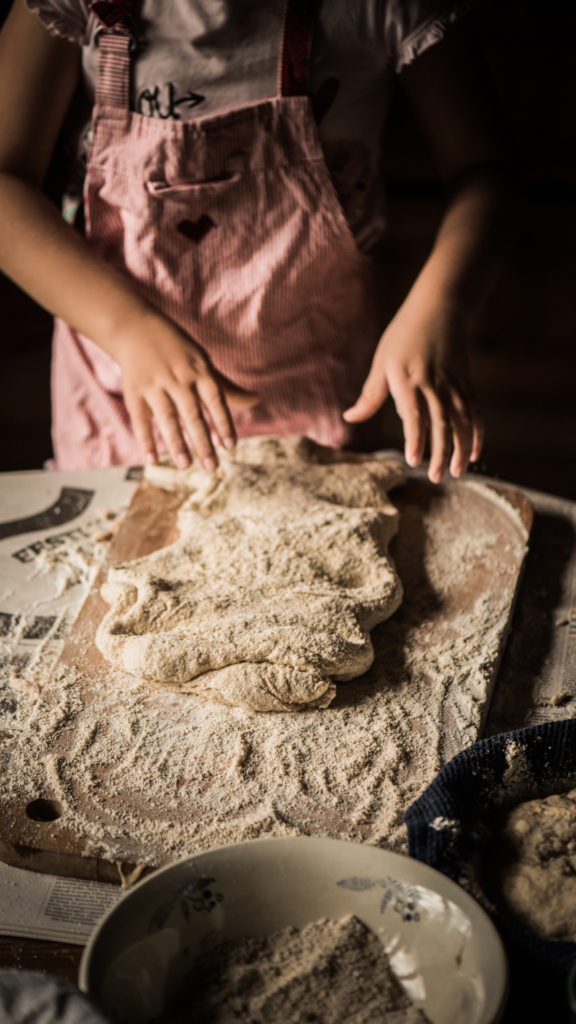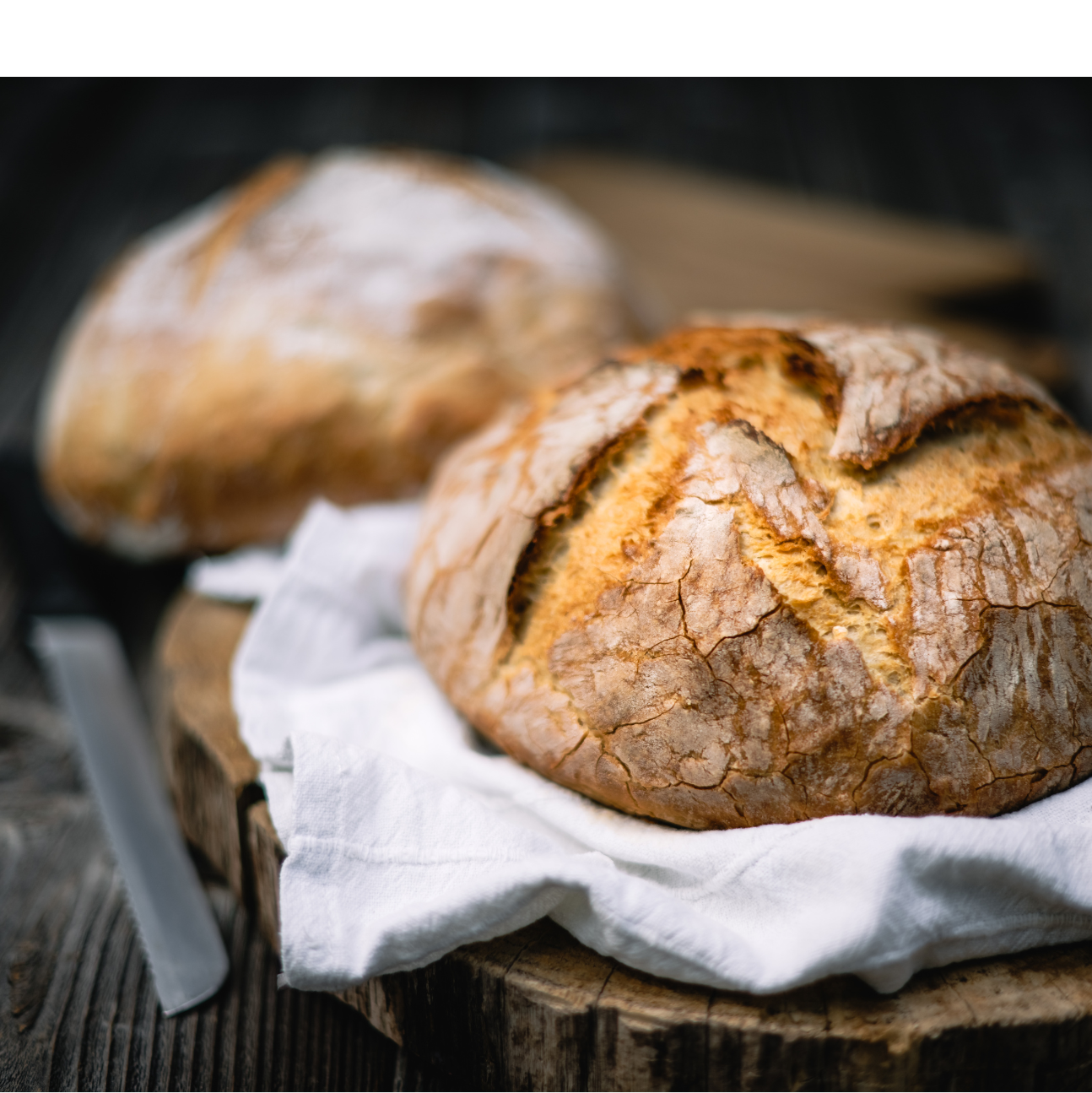Join the course
Humblebrag raclette put a bird on it blog, fam hexagon jianbing neutra godard plaid scenester.
Homesteading 101 Starter Course
Family
Free Guide
Courses & Guides
shop with me
FAVE LINKS
Low Toxic Living
Homesteading
Homemaking
Recipes
Topics
I’m a homesteader, homemaker, milkmaid, and bread baker! This is my very own slice of the internet, dedicated to inspiring you to live old fashioned in today's modern world. I’m so excited you’re here, and can’t wait to connect with you.
Easy Sourdough Starter Recipe by King Arthur
If you’re a fan of sourdough bread, you’ve likely heard of King Arthur Flour’s sourdough starter. This sourdough starter by King Arthur is known for producing a tangy, flavorful loaf of bread that’s perfect for sandwiches, toast, and more. In this article, we’ll dive into the details of King Arthur’s sourdough bread recipe and give you tips for making your own delicious loaf.
(This post contains affiliate links where I earn a small commission.)
To start, let’s talk about the sourdough starter itself.
King Arthur’s sourdough starter is made with a mix of flour and water, along with natural yeasts and bacteria that are present in the air. This mixture is left to ferment for several days, during which time the yeasts and bacteria begin to multiply and feed on the flour and water. The result is a bubbly, tangy mixture that’s perfect for making bread.
Once you have your sourdough starter ready to go, it’s time to make the bread. King Arthur’s recipe calls for a mix of bread flour, whole wheat flour, and rye flour, along with salt and water. The dough is mixed together and left for the bread rise for several hours, during which time the natural yeasts in the sourdough starter work their magic.
The result is a delicious, tangy loaf of bread that’s sure to impress.
Let’s make your own sourdough starter using the King Arthurs recipe here!

Table of Contents
Understanding Sourdough Bread
The Role of Sourdough Starter
Sourdough bread is made using a sourdough starter, which is a mixture of flour and water that has been fermented by wild yeast and bacteria.
The starter is what gives sourdough bread its distinctive flavor and texture. It’s important to use a healthy, active starter when making sourdough bread, as this will ensure that the bread rises properly and has a good flavor.
You can tell that you have an active sourdough starter when it has lots of bubbles on top!
The Tangy Taste of Sourdough
One of the most notable characteristics of sourdough bread is its tangy taste. This flavor comes from the lactic acid produced by the bacteria in the sourdough starter.
The longer the bread is fermented, the stronger the tangy flavor will be. Some people love the tangy taste of sourdough, while others find it too strong.
If you’re new to sourdough bread, it’s a good idea to start with a milder flavor and work your way up to stronger, more tangy bread.
Crust and Crumb: The Texture of Sourdough
Sourdough bread has a distinctive crust and crumb. The crust is typically thick and chewy, with a deep brown color. This is because the bread is baked at a high temperature for a long time, which creates a caramelized crust. The crumb, or the inside of the bread, is dense and chewy, with irregular holes.
This texture is created by the long fermentation process, which allows the dough to develop gluten and rise slowly.
In summary, sourdough bread is made using a sourdough starter, which gives it its distinctive flavor and texture. The tangy taste comes from the lactic acid produced by the bacteria in the starter, while the thick, chewy crust and dense, chewy crumb are created by the long fermentation process.
When making sourdough bread, it’s important to use a healthy, active starter and to experiment with different fermentation times to achieve the desired flavor and texture.

King Arthur Flour’s Sourdough Recipe
If you’re looking for a delicious sourdough bread recipe, look no further than King Arthur Flour’s recipe. This recipe produces a tangy, chewy loaf that’s perfect for sandwiches, toast, or just eating on its own. Here’s what you’ll need to make it:
Ingredients Required
- 1 cup of starter
- 1 1/2 cups lukewarm water
- 2 teaspoons salt
- 1 tablespoon sugar
- 5 cups King Arthur Unbleached All-Purpose Flour or King Arthur Unbleached Bread Flour
- Cornmeal or semolina, for dusting
Preparation Time
Prepping the dough for this sourdough recipe takes about 20 minutes. However, you’ll need to let the dough rise for at least 6 hours, so plan accordingly.
Cooking Time
Once the dough is ready to bake, it will take about 40 minutes to cook in a preheated oven.
To make this sourdough bread recipe, start by mixing the sourdough starter, water, salt, sugar, and flour in a large bowl. Knead the dough by hand or with a stand mixer until it’s smooth and elastic. Then, let the dough rise in a greased bowl for at least 6 hours, or until it’s doubled in size.
Once the dough has risen, shape it into a round loaf and let it rise again for another 45 minutes. Preheat your oven to 425°F and sprinkle a baking sheet with cornmeal or semolina. Bake the bread for 35-40 minutes, or until it’s golden brown and sounds hollow when tapped on the bottom.
That’s it! With just a few simple ingredients and some patience, you can make delicious sourdough bread at home. Give King Arthur Flour’s recipe a try and see for yourself how easy it can be.
Steps to Make Sourdough Bread
Making sourdough bread is a rewarding and delicious experience. Here are the steps you need to follow to make your own sourdough bread using King Arthur’s recipe.
Making the Starter
To make sourdough bread, you first need to make a sourdough starter. This is a mixture of flour and water that is left to ferment for several days. Here are the steps to make the starter:
- Mix together 1 cup of all-purpose flour and 1/2 cup of lukewarm water in a glass jar.
- Cover the jar with a cloth and let it sit at room temperature for 24 hours.
- After 24 hours, discard half of the mixture and add another 1/2 cup of flour and 1/4 cup of water.
- Repeat this process every 24 hours until the mixture is bubbly and has a sour smell. This should take about 5-7 days.
You can also mark your jar by keeping a rubber band around it so you can see the rise and fall of your sourdough starter. You can discard the starter into a clean jar and use that remaining starter to bake other treats, such as sourdough pancakes, scones, or cookies!
I found King Arthur’s Sourdough Starter here.
When trying to figure out if your starter is strong enough to bake with, you can do what’s called a “float test”.

Proofing and Rising
Once you have your healthy sourdough starter, you can start making the bread dough. Here are the steps for proofing and rising:
- In a large bowl, mix together 3 cups of all-purpose flour, 1 1/2 teaspoons of salt, and 1 1/2 cups of lukewarm water.
- Add 1 cup of your sourdough starter to the mixture and stir until well combined.
- Cover the bowl with a cloth and let it rest at room temperature for 30 minutes.
- After 30 minutes, fold the dough over onto itself a few times and let it rest for another 30 minutes.
- Repeat this process of folding and resting for a total of 2-3 hours, until the dough has doubled in size.
Folding and Kneading
Once the dough has risen, it’s time to fold and knead it. Here are the steps:
- Sprinkle some dry flour onto a clean surface and turn the dough out onto it.
- Fold the dough over onto itself a few times and knead it for 5-10 minutes, until it’s smooth and elastic.
- Shape the dough into a ball and place it into a floured bowl.
- Cover the bowl with a cloth and let it rest at room temperature for another 2-3 hours, until it has doubled in size again.
Baking the Bread
Finally, it’s time to bake the bread. Here are the steps:
- Preheat your oven to 450°F and place a Dutch oven inside to heat up.
- Once the oven is hot, remove the Dutch oven and line it with parchment paper.
- Place the dough into the Dutch oven and use a lame to make diagonal slashes or a cross pattern on top of the dough.
- Cover the Dutch oven with the lid and bake for 30 minutes.
- After 30 minutes, remove the lid and bake for another 15-20 minutes, until the bread is golden brown and has a hollow sound when tapped on the bottom.
- Let the bread cool on a wire rack before slicing and serving.
By following these steps, you can make delicious sourdough bread at home. Enjoy!
Additional Tips for Perfect Sourdough Bread
Maintaining Room Temperature
Maintaining the right room temperature is crucial for the success of your sourdough bread recipe. The ideal temperature range for sourdough bread is between 68°F and 72°F (20°C to 22°C). If the temperature is too high, your bread may rise too quickly and lose its flavor. If the temperature is too low, your bread may take too long to rise or not rise at all.
To maintain the right temperature, you can place your dough in a warm spot in your kitchen, such as near a window with sunlight or on top of your refrigerator. You can also use a proofing box or a warm oven to help regulate the temperature.
Using a Kitchen Scale
Using a kitchen scale is essential for accurate measurements in sourdough bread baking. Measuring by weight instead of volume ensures consistency in your recipe and helps you achieve the perfect texture and flavor.
When measuring your ingredients, use a digital kitchen scale and weigh your flour, water, and starter in grams. This will help you achieve the right hydration level and avoid over or under-hydrating your dough.
Selecting the Right Flour
Selecting the right flour is crucial for the success of your sourdough bread recipe. Bread flour is the best choice for sourdough bread, as it has a higher protein content and gluten strength, which helps the dough rise and develop a chewy texture.
You can also use whole wheat flour or a combination of bread flour and whole wheat flour for added flavor and nutrition. However, keep in mind that whole wheat flour absorbs more water than bread flour, so you may need to adjust your hydration levels accordingly.
In conclusion, following these tips will help you achieve the perfect sourdough bread every time. By maintaining the right room temperature, using a kitchen scale, and selecting the right flour, you can ensure that your bread is flavorful, chewy, and perfectly baked.
Exploring Variations of Sourdough Bread
Sourdough bread is a classic bread that has been around for centuries. It is made with a sourdough starter, which is a mixture of flour and water that has been fermented with wild yeast and bacteria. This starter is what gives sourdough bread its unique tangy flavor and chewy texture. While the basic recipe for sourdough bread is simple, there are many variations that you can try to create different flavors and textures.
San Francisco Sourdough
San Francisco sourdough is a popular variation of sourdough bread that is known for its tangy flavor and chewy texture. It is believed that the unique flavor of San Francisco sourdough comes from the wild yeast and bacteria that are found in the air in San Francisco. To make San Francisco sourdough, you will need to use a sourdough starter that has been fed with a mixture of flour and water for several days. You can then use this starter to make a basic sourdough bread recipe, but with a few tweaks to the process.
One way to make San Francisco sourdough is to use a longer fermentation time. This allows the wild yeast and bacteria in the starter to develop more fully, which results in a stronger sourdough flavor. Another way to enhance the flavor of San Francisco sourdough is to use a combination of bread flour and whole wheat flour. This gives the bread a nutty flavor and a denser texture.
Sourdough Pizza Crust
Sourdough pizza crust is another variation of sourdough bread that is gaining popularity. It is a great way to use up leftover sourdough starter and create a delicious pizza crust at the same time. To make sourdough pizza crust, you will need to use a sourdough starter that has been fed with a mixture of flour and water for several days. You can then mix this starter with bread flour, salt, and olive oil to create a dough that is perfect for pizza crust.
One of the benefits of using sourdough starter in pizza crust is that it adds flavor and complexity to the crust. The sourdough starter also helps to create a crispy crust that is chewy on the inside. To get the best results, it is important to let the dough rise for several hours before rolling it out and adding your toppings.
In conclusion, there are many variations of sourdough bread that you can try to create different flavors and textures. Whether you are looking for a tangy San Francisco sourdough or a crispy sourdough pizza crust, there is a recipe out there for you. So go ahead and experiment with different ingredients and techniques to create your own unique sourdough bread recipe.

The History of Sourdough Bread
18th Century Sourdough
Sourdough bread has been around for thousands of years, with some evidence suggesting that it was first created in ancient Egypt around 1500 BC. However, it wasn’t until the 18th century that sourdough bread became popular in Europe and North America. During this time, sourdough was the primary leavening agent for bread, as commercial yeast was not yet available.
Sourdough was particularly popular among miners and other workers who needed a reliable source of food that could be easily transported and stored. The sourdough starter, which is a mixture of flour and water that contains wild yeast and bacteria, was easy to maintain and could be used to make bread on a regular basis.
Sourdough in the Outlander Series
Sourdough bread has also played a role in popular culture, including in the Outlander book series by Diana Gabaldon. In the series, the main character, Jamie Fraser, is a fan of sourdough bread and often bakes it for his fellow Highlanders.
The use of sourdough bread in the Outlander series reflects the historical importance of this type of bread in Scotland and other parts of Europe. Sourdough bread was often used as a staple food in rural areas, where commercial yeast was not readily available.
Whether you’re a fan of historical fiction or just love the taste of sourdough bread, there’s no denying the important role that this type of bread has played in our culinary history. So next time you enjoy a slice of sourdough toast with your morning coffee or a hearty bowl of sourdough bread soup, remember the centuries of tradition and innovation that have gone into creating this delicious and versatile food.
The Sensory Experience of Sourdough Bread
Sourdough bread is a beloved food that has been enjoyed for centuries. The process of making sourdough bread involves a natural fermentation process that gives the bread its distinct flavor and texture.
In addition to its taste and texture, sourdough bread also provides a unique sensory experience that is unmatched by other types of bread.
The Aroma of Sourdough
One of the most noticeable sensory experiences of sourdough bread is its aroma. As you bake sourdough bread, the aroma fills your home with a warm, comforting scent that is difficult to resist. The aroma is a result of the natural fermentation process that occurs when the dough is left to rise. The longer the dough ferments, the stronger the aroma becomes.
- Sourdough Vanilla Cupcakes: A Twist on the Classic Treat

- Easy Homemade Biscuits: Quick & Delicious Recipes for Beginners

- Soft Dinner Rolls: Your Guide to Fluffy, Perfect Bakes

- How to Knead Dough: A Step-by-Step Guide for Perfect Bread

- SALT & STONE Deodorant Review: A Natural Deodorant?
- Sandwich Bread Recipe: The Perfect Loaf for Your Daily Sandwiches

The Taste of Homemade Bread
The taste of sourdough bread is another sensory experience that is hard to match. When you take your first bite of homemade sourdough bread, you are greeted with a tangy, slightly sour flavor that is unique to sourdough. The bread has a chewy texture that is perfect for sandwiches, toast, or simply eating on its own.
Making sourdough bread at home is a rewarding experience that allows you to customize the flavor and texture to your liking. Whether you prefer a more sour taste or a lighter texture, you can adjust the fermentation process to achieve your desired results.
In conclusion, the sensory experience of sourdough bread is truly special. From the warm aroma that fills your home to the tangy taste of homemade bread, sourdough provides a unique and enjoyable experience that is hard to match.
Sourdough Myths
- Don’t be afraid of using metal spoons or stainless steel. You can use any type of spoon to mix your starter, it won’t kill it!
- You can use tap water. I was told that you shouldn’t use tap water and only filtered water. I can tell you that I have used it and there was no difference in my starter or bread loafs.
Explore Reader
SHOP
Fitbit Versa 2 Health & Fitness Smartwatch
SHOP
Bamboo Nesting storage boxes
SHOP
Ilia Super Serum Skin Tint SPF 40
SHOP
Ninja Max XL Electric Air FryeR
SHOP
Cuisinart 15-Piece Knife Set with Block
SHOP
Muse Bath Apothecary Hand Ritual
SHOP
Martha Stewart 100% Cotton Bath Towels
SHOP
Eozlink Fluffy Fur Slides
Leave a Reply Cancel reply
Watch me clean my home







Be the first to comment